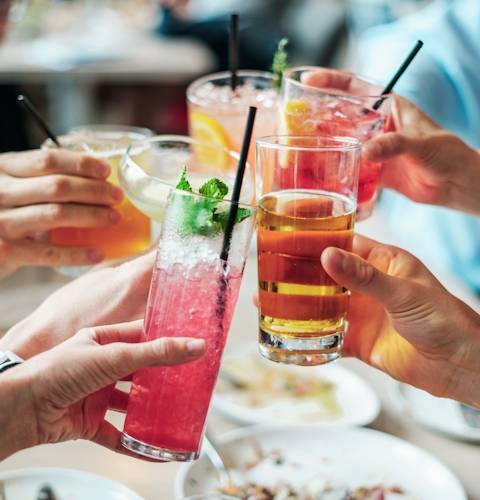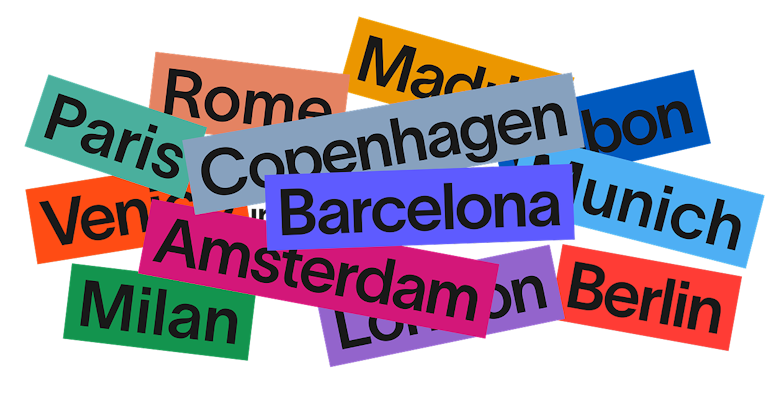
Seasonal specialties throughout the year
An introduction to Austria’s drinking culture
01/2023 - Barbara Keller
Austria’s drinking culture is quite diverse—and what can I say? We love drinking, sometimes a bit too much. While most people associate this landlocked country with wine and beer, there’s a wide range of seasonal drinks you may never have heard of.
SPRING
Tipperl
As soon as the cold winter months have passed, Austrians start drinking their beloved mixed wine drinks. One of the most famous ones is called Tipperl, traditionally served in a 250 ml glass. The drink consists of three parts: white wine, a raspberry lemonade known as “rotes Kracherl” and water.
Eierlikör
Originally from Antwerp, Eierlikör is nowadays often consumed around Easter. This liqueur is made from alcohol, egg yolk, and sugar, among other ingredients. It’s also popular around Christmas time in hot drinks such as eggnog. Also, it’s frequently used as an ingredient in cakes, pies, and desserts.
SUMMER
Radler
Radler is the perfect refreshment on a boiling hot summer day. This mixed drink consists of beer and lemonade. One of the country’s most popular ones is produced by the Styrian brewery Gösser.
Spritzer
During summertime, Austrians also love a refreshing glass of Spritzer (actually, more than just one). It’s a mix of white wine and sparkling water. Many people, especially the younger generation, refine their Spritzer with a dash of syrup. The most popular variations are raspberry, mango, cranberry, and peach.
Hugo
It's hard to imagine summer without a Hugo cocktail. Refreshing and light, it’s a great alternative to the Italian classic Aperol Spritz. Hugo is made of prosecco, elderflower syrup, fresh mint, soda water, and slices of lime or lime juice. Invented in South Tyrol, the drink is now widespread in German-speaking countries.
AUTUMN
Most
Most is Austrian cider that is traditionally made from apples, squeezed with a cider press. The fructose contained in the fruit is fermented into alcohol by yeast fungi. The fermentation process can take up to three weeks. This drink is mainly consumed in the traditional Austrian taverns called “Heuriger”.
Sturm
In September and October, Austrians usually enjoy the last rays of sunshine while having one too many glasses of Sturm, a fermenting grape juice, still on its way to becoming wine—Austria's favorite way to celebrate the harvest season. Its production process is almost identical to the one of Most, but instead of apples, Sturm is made from white and red grapes.
Fun fact: Drinking Sturm is a ritual. For example, the glass should only be raised with the left hand. Toasting is a no-go, as it’s not yet a fully mature wine. Instead of "Prost" (cheers), people say "Mahlzeit" (Enjoy your meal).
Schilcher
Schilcher is a wine made from the Austrian red grape variety Blauer Wildbacher. Because of its light red colour, it’s considered a rosé wine. Schilcher is a protected trade name—it must come from the province of Styria. In autumn it’s often enjoyed as fermenting grape juice, known as Schilchersturm.
WINTER
Glühwein & Punsch
If you ever visit a Christmas market in Austria, there’s no chance of leaving without having tasted at least one mug of Glühwein or Punsch. Glühwein is the German word for mulled wine—a drink we probably all know too well. Punsch is a traditional mixture of fruit juice or tea with spices and liquor. The most popular flavours are orange, apple, and all kinds of berries. An extra strong version is the so-called Turbo-Punsch.
Jagertee
When the temperatures drop far below zero, Austrians like to keep themselves warm with Jagertee. It’s a mix of black tea and a shot of Inländer rum.
Schnaps
To stimulate digestion after a hearty meal, people usually have a shot of schnapps (in German we call it Stamperl, which is a 2 cl glass). The most popular one, especially around Christmas time, is schnapps made from walnuts. But also Willi and Zirberl are among the Austrians’ favourites. Willi is a schnapps made from the Williams pear, while Zirberl is distilled from the cones of the Swiss stone pine.
If you made it all the way to the end, I’d say you deserve a drink now. Check out our Austrian numa properties in Salzburg and Vienna—so you can enjoy all these different flavours in an authentic atmosphere. Prost!












